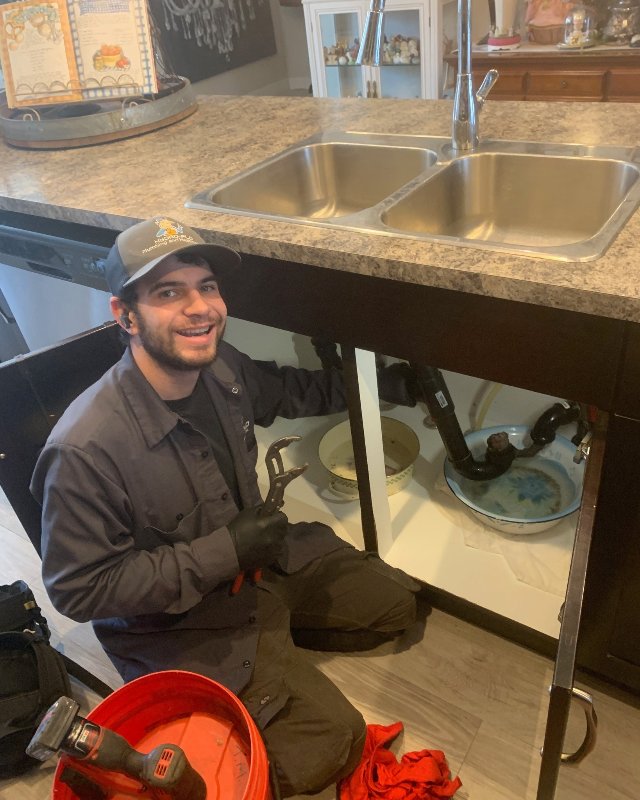Blogs
22 Fun Facts About Plumbing

Plumbing has shaped civilization for thousands of years. The modern conveniences we take for granted today—such as single-handle faucets, toilet plungers, and sump pumps—were revolutionary in their time. The story of plumbing is full of fascinating milestones. Check out these fun facts about plumbing to appreciate just how far we’ve come over the years.
1. The Indus Valley had plumbing over 5,000 years ago.
Archaeologists have found clay and copper piping systems dating back to around 3000 BC in the Indus River Valley (modern-day India and Pakistan). These early systems carried water into homes and drained wastewater through covered channels.
2. Ancient Egyptians used copper pipes.
By about 2500 BC, Egyptians were installing copper piping for bathrooms and drainage, making them pioneers of early plumbing systems.
3. The Minoans built the first flushing toilets.
Between 1500 and 1000 BC, the Minoan civilization on Crete developed indoor baths and gravity-driven flushing toilets, complete with drains and seats.
4. The word “plumber” comes from lead.
The Latin word plumbum means lead, and Roman workers who dealt in lead pipes were called plumbarii. That’s how “plumber” entered the English language. It’s also why the chemical symbol for lead is Pb.
5. The “John” was named after a real person.
Sir John Harington, godson to Queen Elizabeth I, invented a flushing toilet in 1596 that used water from a cistern to clear waste, an early forerunner of modern toilets. His first name was eventually associated with the invention, and “John” became a euphemism for toilet.
6. The bidet appeared in the 1700s.
The earliest written reference to a bidet appeared in France around 1710. It quickly became a sign of sophistication across Europe.
7. The S-trap was invented to stop sewer smells.
In 1775, Scottish mechanic Alexander Cumming patented the S-trap, an S-shaped bend in drainpipes that holds water to block sewer gases from rising. In the late 1800s, the refined P-trap design was introduced. This became the standard because it connects more efficiently to horizontal drains and is less susceptible to siphoning.
8. Early city plumbing prevented fires.
New York installed its first public water mains around 1830 for fire protection and access to clean drinking water. The infrastructure set the standard for city plumbing systems worldwide.
9. Sewers saved lives in Chicago 170 years ago.
In 1856, Chicago launched one of North America’s first major sewer systems after contaminated water led to deadly disease outbreaks. It quickly became a model for other cities.
10. Water heaters made hot baths a simple luxury.
In 1868, a London painter, Benjamin Waddy Maughan, invented the “geyser,” the first gas-powered instantaneous water heater. In 1889, a Norwegian engineer, Edwin Ruud, improved upon the idea with the first storage tank model. Ruud brand water heaters are still around today.
11. The first cast-iron bathtub was a converted horse trough.
In 1883, John Kohler coated a horse trough with enamel and marketed it as a bathtub, paving the way for modern bathroom fixtures.
12. The plunger is over 150 years old.
The first known plunger was patented in 1874 as a “vent clearer” for sinks. A rubber cup version followed soon after and remains a household staple.
13. Mixing hot and cold water was revolutionary.
In 1880, a man from New Brunswick named Thomas Campbell patented a faucet that combined hot and cold water into a single stream, a superior alternative to the two-tap design once found at every sink.
14. The single-handle faucet simplified life.
In 1939, inventor Al Moen introduced the single-handle faucet, allowing people to control water temperature with one motion. This design remains popular today.
15. World War II changed plumbing materials.
Metal shortages during the 1940s pushed manufacturers to develop plastic piping alternatives, launching the era of modern PVC and PEX systems. By the early 1970s, more than half of all new homes in North America used plastic piping instead of metal.
16. Poly-B pipes didn’t last.
Polybutylene (Poly-B) piping was common in homes during the 1970s and 1980s. However, it was later found to degrade and crack much faster than other materials, leading to widespread replacements.
17. Modern low-flush toilets save litres.
After 1992, new regulations limited toilets to 1.6 US gallons (about 6 litres) per flush. New, ultra-efficient models now use as little as 4.5 litres.
18. A dripping tap wastes more water than you think.
A faucet dripping two times per second wastes more than 3,000 litres of water a year. This fact about plumbing fixtures is a reminder that small leaks add up fast.
19. Cold weather puts plumbing to the test.
Up to 30 percent of winter plumbing calls in Edmonton involve frozen pipes, a real plumbing emergency. Proper insulation, heat tape, and precautions during sub-zero temperatures help prevent frozen and burst pipes.
20. Sump pumps keep basements dry.
A typical 3/4-horsepower sump pump can move more than 5,000 litres of water per hour, protecting homes from flood damage during spring thaws or heavy rain.
21. Commercial plumbing handles a lot of water.
Commercial systems often use 50 mm water supply pipes (compared to 15 mm lines in homes), allowing them to move thousands of litres per minute.
22. Efficient fixtures make a big difference.
The average Canadian uses about 250 litres of water per day. Upgrading to low-flow faucets, showerheads, and toilets can save a household 20,000 to 30,000 litres of water per person per year.
Call Your Local Plumbing Experts
With these interesting facts about plumbing in mind, you may be ready to improve or protect your current plumbing system. Hydro-Flo Plumbing & Heating is proud to serve homeowners and businesses across Edmonton and the surrounding Alberta communities. As a locally owned company with over 18 years of experience, we’re your one-stop shop for residential and commercial plumbing and HVAC services. We offer 24-hour emergency support, financing, and fair prices backed by quality workmanship. Contact us today to schedule a plumbing system service or upgrade.

